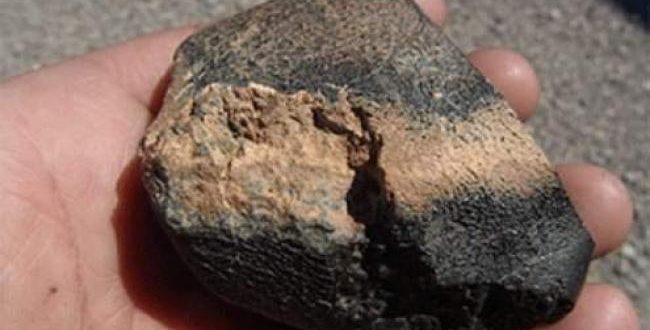A close research of a meteorite from Mars, discovered in 2012, has revealed that some two billion years ago there was volcanic activity on the red planet, much earlier than previously believed.
Shield volcanoes and lava plains formed from lava flowing over long distances, similar to the formation of the Hawaiian Islands. The largest Martian volcano, Olympus Mons, is nearly 17 miles high. That’s almost triple the height of Earth’s tallest volcano, Mauna Kea, at 6.25 miles.
Tom Lapen, a geology professor at the University of Houston and lead author of a paper published Feb. 1 in the journal Science Advances, said the findings offer new clues to how the planet evolved and insight into the history of volcanic activity on Mars.
Much of what we know about the composition of rocks from volcanoes on Mars comes from meteorites found on Earth. Analysis of different substances provides information about the age of the meteorite, its magma source, length of time in space and how long the meteorite was on Earth’s surface.
Something slammed into the surface of Mars 1 million years ago, hitting a volcano or lava plain. This impact ejected rocks into space. Fragments of these rocks crossed Earth’s orbit and fell as meteorites.
The meteorite, known as Northwest Africa 7635 and discovered in 2012, was found to be a type of volcanic rock called a shergottite. Eleven of these Martian meteorites, with similar chemical composition and ejection time, have been found.
“We see that they came from a similar volcanic source,” Lapen said. “Given that they also have the same ejection time, we can conclude that these come from the same location on Mars.”
Together, these meteorites provide information about a single location on Mars. Previously analyzed meteorites range in age from 327 million to 600 million years old. In contrast, the meteorite analyzed by Lapen’s research team was formed 2.4 billion years ago and suggests that it was ejected from one of the longest-lived volcanic centers in the solar system.
Agencies/Canadajournal
 Canada Journal – News of the World Articles and videos to bring you the biggest Canadian news stories from across the country every day
Canada Journal – News of the World Articles and videos to bring you the biggest Canadian news stories from across the country every day



